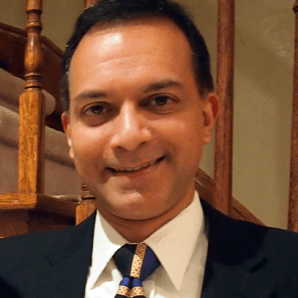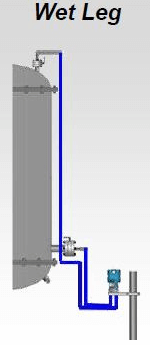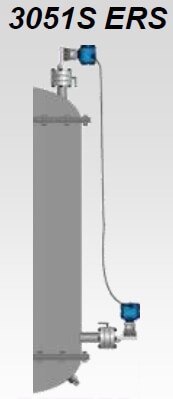For those here in North America, there is a good chance you’re braving extremely cold weather today. The Weather Channel captures the situation well in a post, Arctic Cold Blast Continues; Wind Chill Alerts For Over Half U.S. Population. And Canada makes this appear balmy.

Mark Menezes
Measurement Business Manager
I heard that Mark is developing a part 2 to his original Chemical Engineering article with the same title as his Emerson Exchange presentation. Here’s a sneak peek at some of the ideas he plans to convey in this article.
 In the original article, he highlighted installation practices to address cold outdoor climates where temperatures can drop below -30degC. One key thought for flow applications was to install the transmitter on top of the differential pressure (DP) flow element to eliminate wet legs to not only reduce installation costs, but also to reduce the risk of wet leg plugging and freezing.
In the original article, he highlighted installation practices to address cold outdoor climates where temperatures can drop below -30degC. One key thought for flow applications was to install the transmitter on top of the differential pressure (DP) flow element to eliminate wet legs to not only reduce installation costs, but also to reduce the risk of wet leg plugging and freezing.
 Another way to avoid plugging and freezing in pressure and level applications is to eliminate capillaries through the use of the Rosemount 3051S Electronic Remote Sensor (ERS) system.
Another way to avoid plugging and freezing in pressure and level applications is to eliminate capillaries through the use of the Rosemount 3051S Electronic Remote Sensor (ERS) system.
In the new article, Mark describes additional installation best practices. These include installing modern transmitters directly in the field without heated and unheated enclosures, and using new seals to allow pressure and level transmitters to be close-coupled. This allows the connections to be heated by the hot process rather than through the use of external heat tracing.
Beyond the installation costs for heated or unheated enclosures, they can present operational and maintenance issues. These include energy costs in heated enclosures, possible safety risks with fugitive emission trapping, transmitter inaccuracies from rapid temperature changes, plus ongoing maintenance.
He notes that most transmitters are connected to the process through remote seals—either direct mounted with an oil-filled seal or remotely mounted with and oil-filled seal and capillary. For the oil to be used, determining the temperature range includes low temperature viscosity considerations as well as the oil’s boiling point.
High viscosity at cold temperatures leads to slow or non-response, which impacts pressure and level measurement accuracy. Most sites use heat trace on the impulse lines to avoid this sluggish measurement response. Newer, more modern remote seals are optimized to remove the need for heat trace. These thermally optimized, single-oil seals can be used for pressure measurements, including level applications, where the devices can be close coupled with the process.
The new Rosemount 3051S Thermal Range Expander two-oil systems that include a standard seal with high molecular weight (MW) oil and an intermediate seal with low MW oil will soon be available. These two-oil seal systems will allow operation in applications with even higher process temperatures, and lower ambient temperatures. I’ll share an update when more news becomes available.
Mark closes noting that the traditional approach of enclosures and heat tracing can be replaced with the use of modern transmitters rated for the cold temperatures in conjunction with thermally-optimized seals to close couple pressure and level measurements. This second path will help avoid poor measurement performance and improve overall reliability, safety, and operating costs.
You can connect and interact with other measurement experts in the Pressure, Temperature, Level, Flow, and Tank Gauging groups in the Emerson Exchange 365 community.




